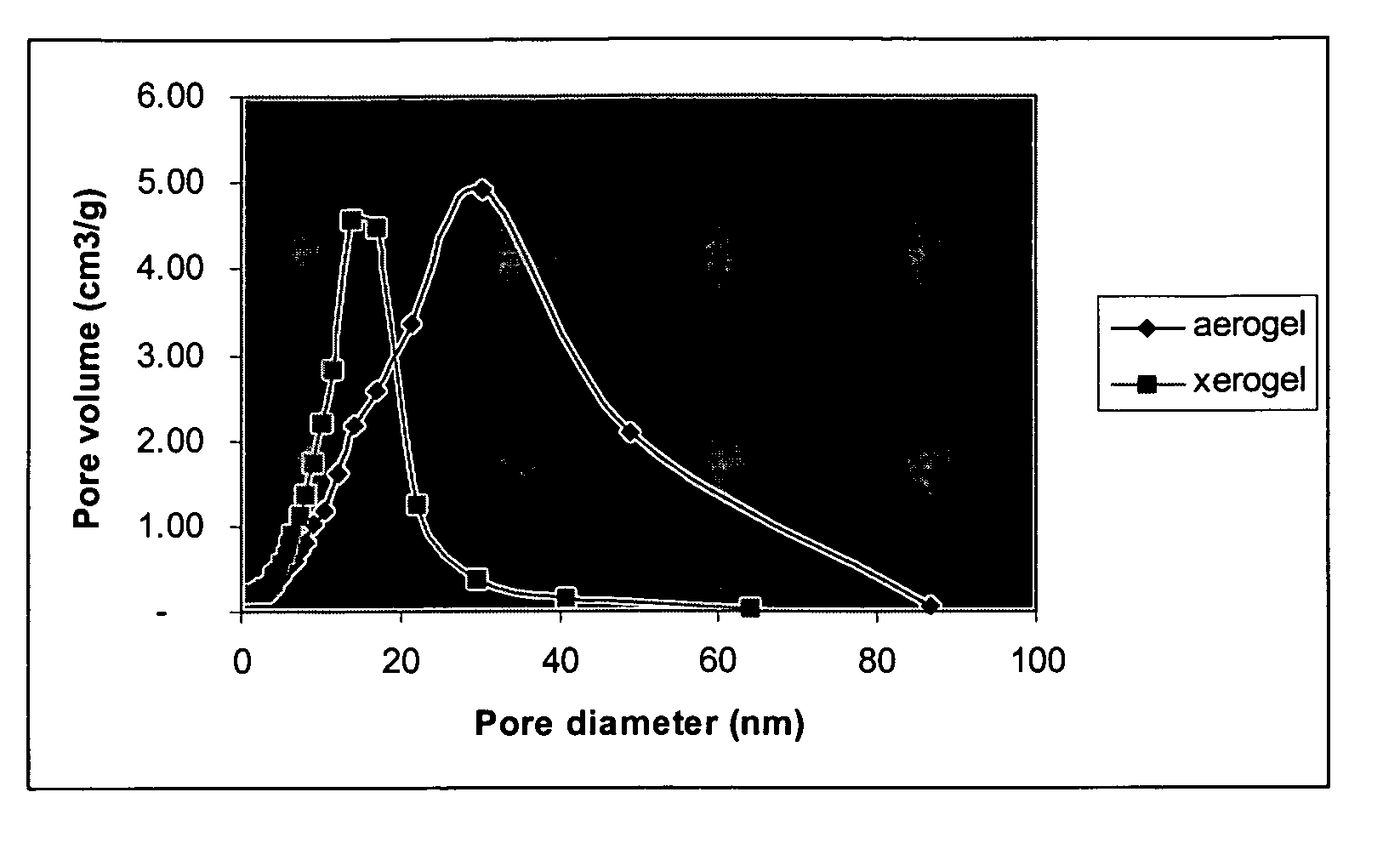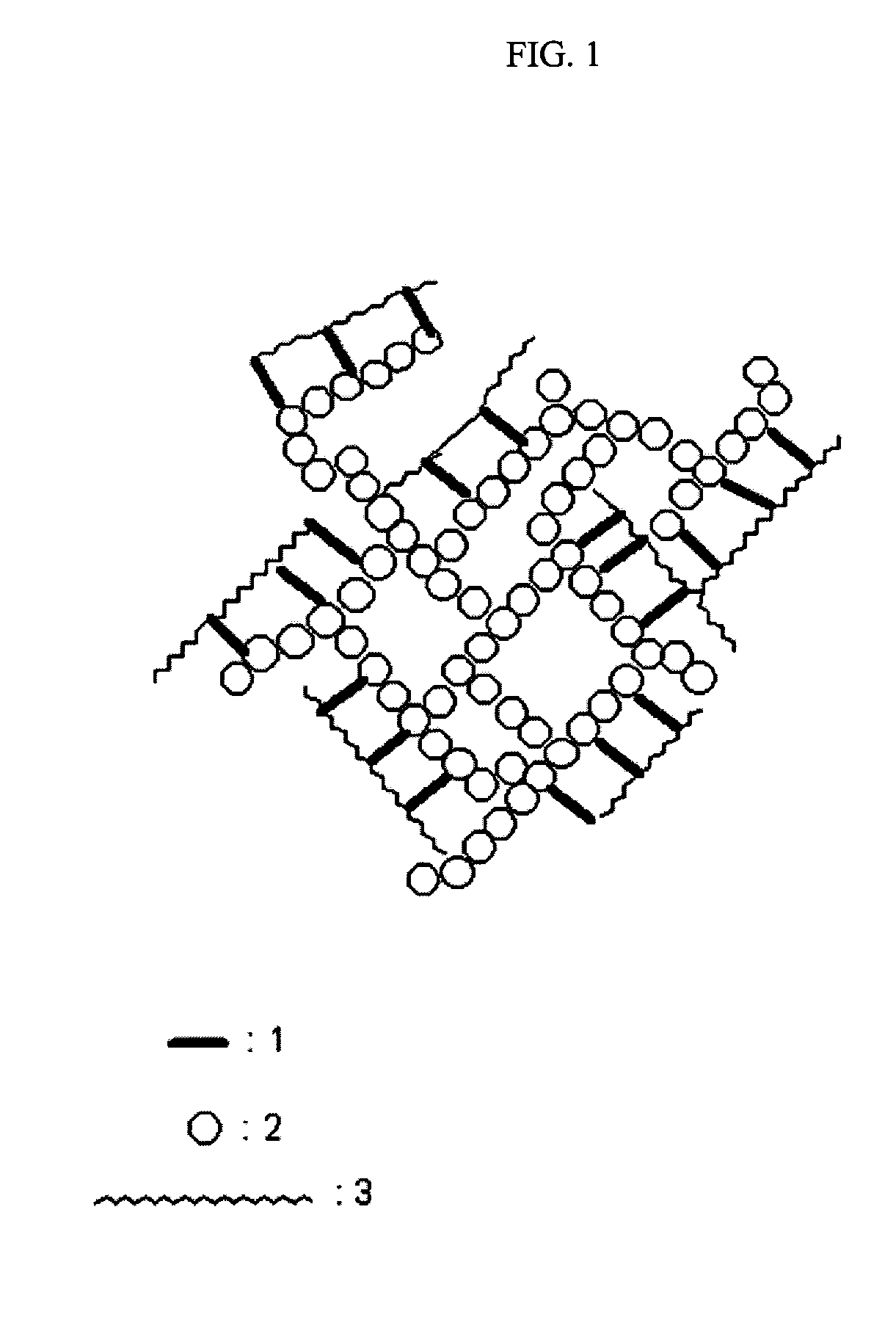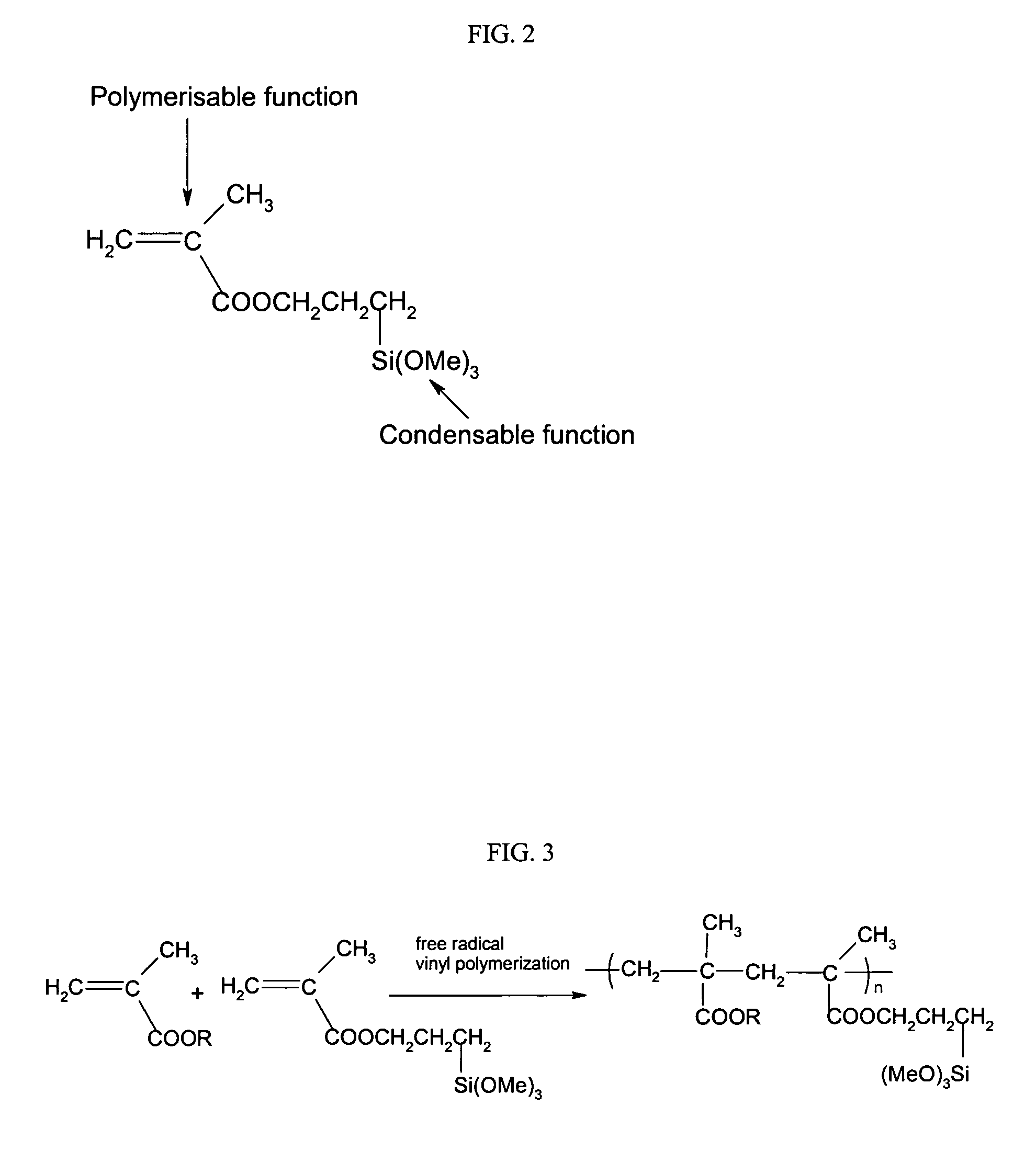Ormosil aerogels containing silicon bonded polymethacrylate
a technology of silicon bonded polymethacrylate and aerogels, which is applied in the direction of silicon compounds, chemistry apparatuses and processes, etc., can solve the problems of affecting reducing the stability of silica aerogels, so as to improve the homogeneity of solution, inhibit phase separation, and accelerate reaction speed
- Summary
- Abstract
- Description
- Claims
- Application Information
AI Technical Summary
Benefits of technology
Problems solved by technology
Method used
Image
Examples
example 1
[0119] This example illustrates the formation of a polymethylmethacrylate (PMMA) modified silica aerogel monolith and fiber reinforced composite with 56.9 weight percent loadings of PMMA. 1.0 g of AIBN was added to a mixture of 10 g of MMA, 24.8 g of TMSPM and 20 g of ethanol, following by vigorous stirring at 70 to 80° C. for 0.5 hr. Trimethoxysilyl grafted polymethymethacrylate oligomer was obtained as a viscous liquid in concentrated ethanol solution. 9.9 g 0.1M HCl aqueous solution was added into a mixture consisting of the above trimethoxysilyl grafted polymethymethacrylate oligomer ethanol solution, 60 g of silica precursor Silbond H5, 1.0 g of Polyethylene glycol methacrylate (Mn: 526) and 300 g of ethanol. This mixture was refluxed at 70 to 75° C. for 2 hours.
[0120] The obtained solution can be gelled in 14 minutes by addition of 12.8 g ethanol diluted ammonia solution (5 / 95 v / v, 29% NH3 aqueous solution against ethanol). Both ormosil monolith and fiber reinforced gel compo...
example 2
[0123] This example illustrates the formation of a polybutylmethacrylate modified silica aerogel monolith and fiber reinforced composite with 61.0 weight percent loadings of PBMA. 1.4 g of AIBN was added to a mixture of 14 g of BMA, 24.8 g of TMSPM and 14 g of ethanol, following by vigorous stirring at 70 to 80° C. for 0.5 hr. Trimethoxysilyl grafted polybutylmethacrylate oligomer was obtained as a viscous liquid in concentrated ethanol solution. 9.9 g 0.1M HCl aqueous solution was added into a mixture consisting of the above trimethoxysilyl grafted polybutylmethacrylate oligomer ethanol solution, 60 g of silica precursor Silbond H5 and 300 g of ethanol. This mixture was refluxed at 70 to 75° C. for 2 hours.
[0124] The obtained solution can be gelled in 5 minutes by addition of 10.0 g ethanol diluted ammonia solution (5 / 95 v / v, 29% NH3 aqueous solution against ethanol) and 2.5 g of 1.0M ammonium fluoride aqueous solution. Both ormosil monolith and fiber reinforced gel composite were...
example 3
[0127] This example illustrates the formation of a polyhydroxyethylmethacrylate modified silica aerogel monolith and fiber reinforced composite with 83.2 weight percent loadings of PHEMA. 1.3 g of AIBN was added to a mixture of 13 g of HEMA, 24.8 g of TMSPM, following by vigorous stirring at 70 to 80° C. for 0.5 hr. Trimethoxysilyl grafted polymethymethacrylate oligomer was obtained as a viscous liquid in concentrated ethanol solution. 8.1 g 0.1M HCl aqueous solution was added into a mixture consisting of the above trimethoxysilyl grafted polyhydroxyethylmethacrylate oligomer ethanol solution and 200 g of ethanol. This mixture was refluxed at 70 to 75° C. for 45 minutes.
[0128] The obtained solution can be gelled in 8 hours at 55° C. after addition of 2.1 g ethanol diluted ammonia solution (25 / 75 v / v, 29% NH3 aqueous solution against ethanol). Ormosil monoliths were obtained from this example. Wet gels were aged in ethanol diluted ammonia solution (5 / 95 v / v, 29% NH3 aqueous solution...
PUM
| Property | Measurement | Unit |
|---|---|---|
| Temperature | aaaaa | aaaaa |
| Temperature | aaaaa | aaaaa |
| Temperature | aaaaa | aaaaa |
Abstract
Description
Claims
Application Information
 Login to View More
Login to View More - R&D
- Intellectual Property
- Life Sciences
- Materials
- Tech Scout
- Unparalleled Data Quality
- Higher Quality Content
- 60% Fewer Hallucinations
Browse by: Latest US Patents, China's latest patents, Technical Efficacy Thesaurus, Application Domain, Technology Topic, Popular Technical Reports.
© 2025 PatSnap. All rights reserved.Legal|Privacy policy|Modern Slavery Act Transparency Statement|Sitemap|About US| Contact US: help@patsnap.com



